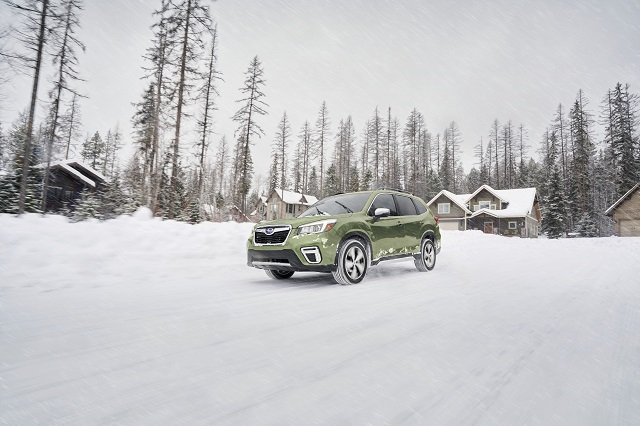Winter is the harshest of seasons, at least when it comes to the weather. And that excess strain extends to our cars. Frigid temperatures, snow, ice and freezing rain can take quite a toll on vehicles. One of the most prominent effects cold weather has on cars is a drop in fuel economy. Simply put, a drop in temperature goes hand-in-hand with a drop in miles-per-gallon.
There’s a host of reasons why fuel economy is worse in winter, as well as a number of steps drivers can take to help mitigate this annual problem.
Why Fuel Economy Is Lower in Winter
Mechanical Factors
- As temperature decreases, density increases. This means the air in your car tires contracts in cold weather, leaving you with less tire pressure. Under-inflated tires have increased rolling resistance.
- Internal combustion engines operate most efficiently at high temperatures. During the winter, it takes longer for an engine to reach its ideal temperature. This drop in efficiency is most prevalent on shorter trips, since the car spends a greater percentage of driving time in sub-optimal temperature.
- In the winter, drivers often turn their engines on prior to driving to warm up their cars. While idling like this, a vehicle gets 0 miles-per-gallon.
- Motor oil and other driveline fluids become thicker in cold weather, resulting in increased friction. This causes the engine to work harder and use more fuel.
- Just like engines, car batteries are less efficient in colder temperatures. They are also taxed more from the increased energy usage of heaters, defrosters, etc. As a result, the alternator must work harder during the winter to keep the battery charged. To meet this demand, it takes more energy from the engine.
- The batteries in electric vehicles are also negatively impacted by cold weather, resulting in decreased driving range. One study done by AAA found a 12% decrease in range when the outside temperature reached 20°F. When the heating system was in use, however, driving range suffered a 41% drop.
- As part of the Clean Air Act, oil refineries are required to make summer and winter blends of gas. Gasoline needs to be able to evaporate for the engine to work, a much taller task in the winter. To help fuel evaporate in freezing temperature, additives such as butane are added to winter blends. Butane and other additives found in winter blends have marginally less energy than those found in summer blends. A study by the EPA found Environmental Protection Agency found that winter gasoline contains 1.7% less energy.
- Using four-wheel drive, a popular option when driving on rough terrain, uses more fuel, thus dropping fuel efficiency.

Exterior Factors
- The air outside the vehicle has a negative effect on its efficiency. Because the cold air is denser, cars traveling in the winter are subjected to an increase in aerodynamic drag, particularly at elevated speeds.
- Roadway conditions often force drivers to travel at slower speeds, reducing fuel economy.
- Tires traveling over icy and snowy roads will have less of a grip on the road, resulting in wasted energy wasting energy.
- All of these factors combined can result is a 10-15 percent drop in miles per gallon compared to warmer weather.
How to Improve Fuel Economy in the Winter
When you’re surrounded by cold weather for months at a time, it’s impossible to completely ward of its effect on fuel efficiency. However, there are a number of simple steps that, when combined, could add a notable boost to your miles per gallon.
- Park your car in a warmer place: Preventing the vehicle from getting too cold will go a long way in improving fuel efficiency.
- Combine trips: An engine is least efficient when it’s cold. During short trips, it never has time to reach optimal temperature.
- Don’t idle: A car engine will warm up faster when the vehicle is moving. The engine will warm up faster being driven, which will allow the heat to turn on sooner, decreasing fuel costs, and reducing emissions.
- Be prudent with warming features: Seat warmers, steering wheel warmers, and other heating devices use up energy. Only use them when necessary.
- Check tire pressure: If you follow every other fuel economy tip but have under-inflated tires, you’ll never reach optimal efficiency.
- Use the correct type of motor oil: Check your owner’s manual for the recommended winter oil.
- Remove exterior car accessories: Roof racks, cargo carriers, even flags increase wind resistance and slow you down.
- Don’t spend much time warming up your vehicle: Cars don’t need to be warmed up on very cold days. Getting seated, fastening your seat belt fasten, and setting the climate control and radio is about all the warm up your car needs. It’s best to drive nice and easy until the car comes up to temperature. This speeds the warming process but also helps minimize wear on the entire vehicle.
Find the average price of gas in your neck of the woods. Then, learn about more gas-saving tips here.
















